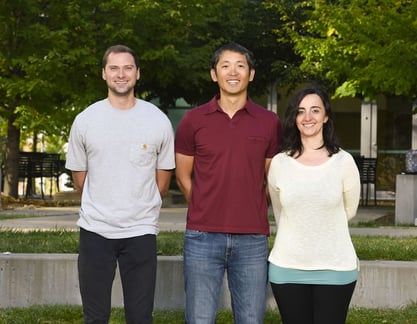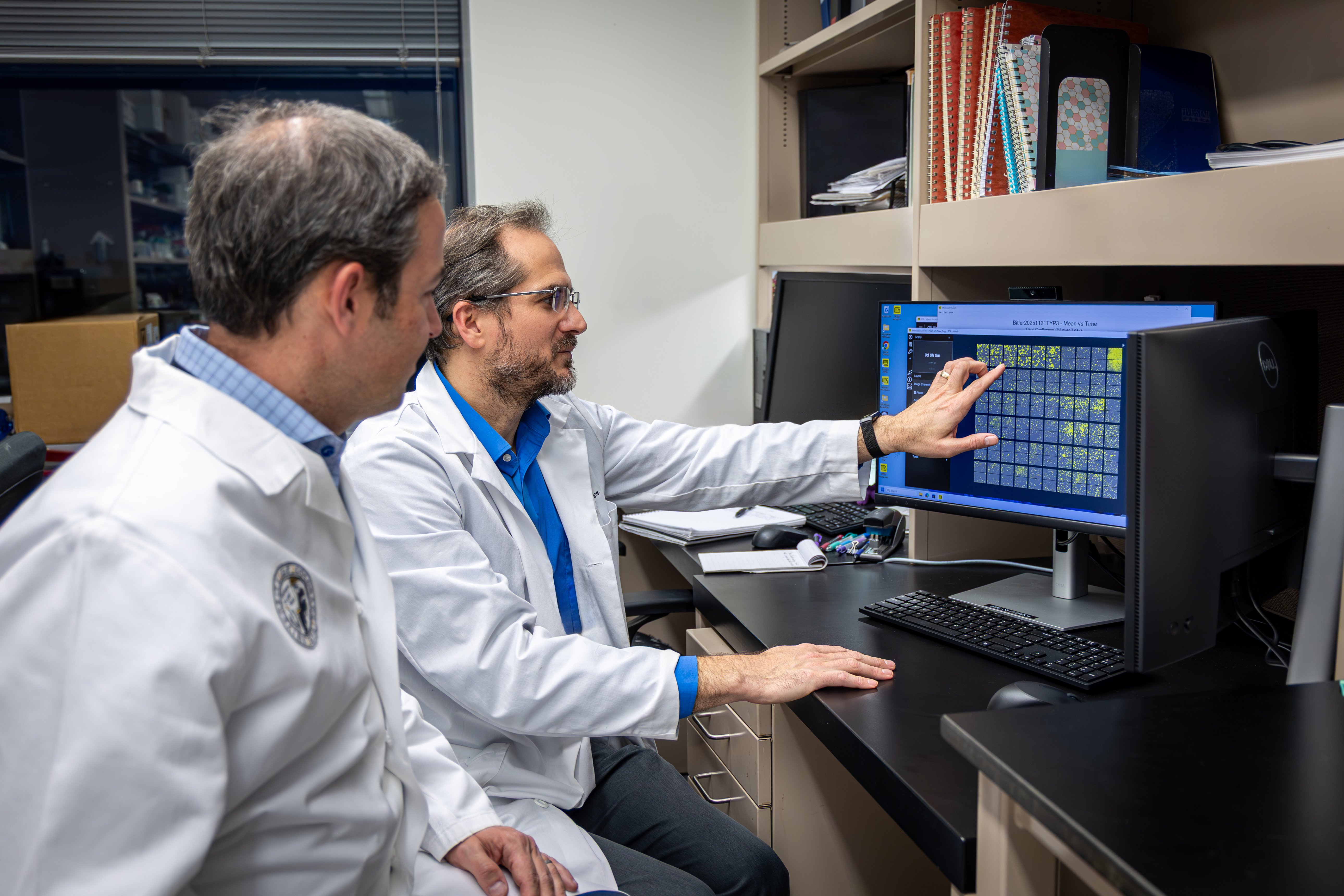A new study published in PNAS highlights a newly identified mechanism of how auditory sensitivity is regulated that could temporarily reduce sensitivity of the auditory system to protect itself from loud sounds that can cause irreversible damage.
The study, led by University of Colorado Anschutz Medical Campus researchers Andrew Mecca and Giusy Caprara, PhD, in the laboratory of Anthony Peng, PhD, tested a decades-old hypothesis that proposes that the gating spring – a tiny, nanometer-scale protein structure that mechanically opens and closes an ion channel in sensory hair cell cells in response to sound vibrations – can act directly as a controller of the channel’s activity.

Andrew Mecca, Anthony Peng and Giusy Caprara |
Previous work in the auditory field has focused mostly on understanding mechanisms that target the ion channel. This study provides the first evidence that the gating spring itself has the capacity to modulate the sensitivity of the channel.
Novel discovery could help protect hearing
“This study documents the first time we understand a mechanism that regulates auditory sensitivity on both the molecular and mechanical levels,” said Peng, associate professor at the University of Colorado School of Medicine and senior author of the study. “We uncovered a new mechanism of modulating sensitivity, which opens the door to discovering more about how the auditory system functions generally and uses this to both maximize the range of sounds that we can detect and protect the vital sensory cells from potential damage.”
The mechanism discussed in the study works by modifying a physical property of the gating spring – its stiffness – which is responsible for controlling how much the channel opens and closes in response to sound vibrations that enter the inner ear. The researchers studied the properties of the gating spring and the resulting activity of the channel in single sensory hair cells, and found that cyclic adenosine monophosphate (cAMP), a specific type of signaling molecule, reduced the stiffness of the gating spring and decreased the channel’s sensitivity – which is the first time a physiological mechanism for controlling gating spring stiffness has been identified.
“Identifying the underlying mechanism of this process – how it works physiologically and mechanically – provides an avenue for future research and provides an opportunity for the field to develop a new type of drug that can be used to prevent a type of hearing loss that occurs from exposure to very loud sound,” Peng said. Ultimately, the researchers aim to learn more about how the ear can detect such a large range of sounds and how the system protects itself, and this represents a huge step forward for the field.




